Top 10 Best Magic Foods To Prevent Cancer And Fact-Check
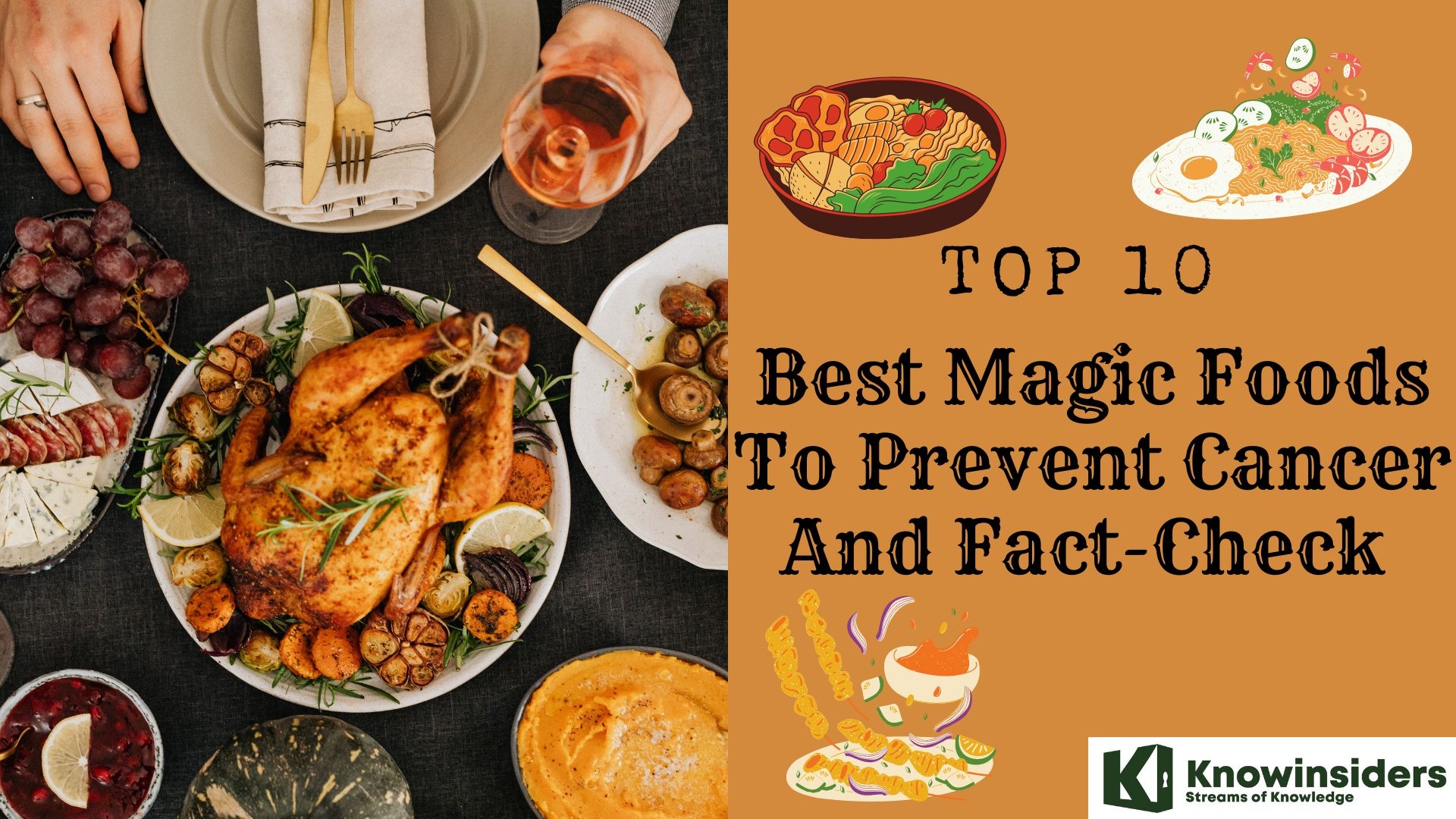 |
| Top 10 Best Magic Foods To Prevent Cancer And Fact-Check Knowinsiders.com |
| Table Of Content |
What you eat can drastically affect many aspects of your health, including your risk of developing chronic diseases like heart disease, diabetes and cancer. The development of cancer, in particular, has been shown to be heavily influenced by your diet.
Many foods contain beneficial compounds that could help decrease the growth of cancer.
Take a look at these best magic foods that will help you prevent and fight cancer, and live a healthier life.
What is Cancer?
Cancer is a disease in which some of the body’s cells grow uncontrollably and spread to other parts of the body.
Cancer can start almost anywhere in the human body, which is made up of trillions of cells. Normally, human cells grow and multiply (through a process called cell division) to form new cells as the body needs them. When cells grow old or become damaged, they die, and new cells take their place.
Sometimes this orderly process breaks down, and abnormal or damaged cells grow and multiply when they shouldn’t. These cells may form tumors, which are lumps of tissue. Tumors can be cancerous or not cancerous (benign).
Cancerous tumors spread into, or invade, nearby tissues and can travel to distant places in the body to form new tumors (a process called metastasis). Cancerous tumors may also be called malignant tumors. Many cancers form solid tumors, but cancers of the blood, such as leukemias, generally do not.
Benign tumors do not spread into, or invade, nearby tissues. When removed, benign tumors usually don’t grow back, whereas cancerous tumors sometimes do. Benign tumors can sometimes be quite large, however. Some can cause serious symptoms or be life threatening, such as benign tumors in the brain.
Types of Cancer
Carcinoma
Carcinomas are the most common type of cancer. They are formed by epithelial cells, which are the cells that cover the inside and outside surfaces of the body. There are many types of epithelial cells, which often have a column-like shape when viewed under a microscope.
Carcinomas that begin in different epithelial cell types have specific names:
Adenocarcinoma is a cancer that forms in epithelial cells that produce fluids or mucus. Tissues with this type of epithelial cell are sometimes called glandular tissues. Most cancers of the breast, colon, and prostate are adenocarcinomas.
Basal cell carcinoma is a cancer that begins in the lower or basal (base) layer of the epidermis, which is a person’s outer layer of skin.
Squamous cell carcinoma is a cancer that forms in squamous cells, which are epithelial cells that lie just beneath the outer surface of the skin. Squamous cells also line many other organs, including the stomach, intestines, lungs, bladder, and kidneys. Squamous cells look flat, like fish scales, when viewed under a microscope. Squamous cell carcinomas are sometimes called epidermoid carcinomas.
Transitional cell carcinoma is a cancer that forms in a type of epithelial tissue called transitional epithelium, or urothelium. This tissue, which is made up of many layers of epithelial cells that can get bigger and smaller, is found in the linings of the bladder, ureters, and part of the kidneys (renal pelvis), and a few other organs. Some cancers of the bladder, ureters, and kidneys are transitional cell carcinomas.
Sarcoma
Sarcomas are cancers that form in bone and soft tissues, including muscle, fat, blood vessels, lymph vessels, and fibrous tissue (such as tendons and ligaments).
Osteosarcoma is the most common cancer of bone. The most common types of soft tissue sarcoma are leiomyosarcoma, Kaposi sarcoma, malignant fibrous histiocytoma, liposarcoma, and dermatofibrosarcoma protuberans.
Leukemia
Cancers that begin in the blood-forming tissue of the bone marrow are called leukemias. These cancers do not form solid tumors. Instead, large numbers of abnormal white blood cells (leukemia cells and leukemic blast cells) build up in the blood and bone marrow, crowding out normal blood cells. The low level of normal blood cells can make it harder for the body to get oxygen to its tissues, control bleeding, or fight infections.
There are four common types of leukemia, which are grouped based on how quickly the disease gets worse (acute or chronic) and on the type of blood cell the cancer starts in (lymphoblastic or myeloid). Acute forms of leukemia grow quickly and chronic forms grow more slowly.
Lymphoma
Lymphoma is cancer that begins in lymphocytes (T cells or B cells). These are disease-fighting white blood cells that are part of the immune system. In lymphoma, abnormal lymphocytes build up in lymph nodes and lymph vessels, as well as in other organs of the body.
There are two main types of lymphoma:
Hodgkin lymphoma – People with this disease have abnormal lymphocytes that are called Reed-Sternberg cells. These cells usually form from B cells.
Non-Hodgkin lymphoma – This is a large group of cancers that start in lymphocytes. The cancers can grow quickly or slowly and can form from B cells or T cells.
Multiple Myeloma
Multiple myeloma is cancer that begins in plasma cells, another type of immune cell. The abnormal plasma cells, called myeloma cells, build up in the bone marrow and form tumors in bones all through the body. Multiple myeloma is also called plasma cell myeloma and Kahler disease.
Melanoma
Melanoma is cancer that begins in cells that become melanocytes, which are specialized cells that make melanin (the pigment that gives skin its color). Most melanomas form on the skin, but melanomas can also form in other pigmented tissues, such as the eye.
Brain and Spinal Cord Tumors
There are different types of brain and spinal cord tumors. These tumors are named based on the type of cell in which they formed and where the tumor first formed in the central nervous system. For example, an astrocytic tumor begins in star-shaped brain cells called astrocytes, which help keep nerve cells healthy. Brain tumors can be benign (not cancer) or malignant (cancer).
Top 10 Best Magic Foods That Help You Fight Cancer And Fact-Check
1. Garlic
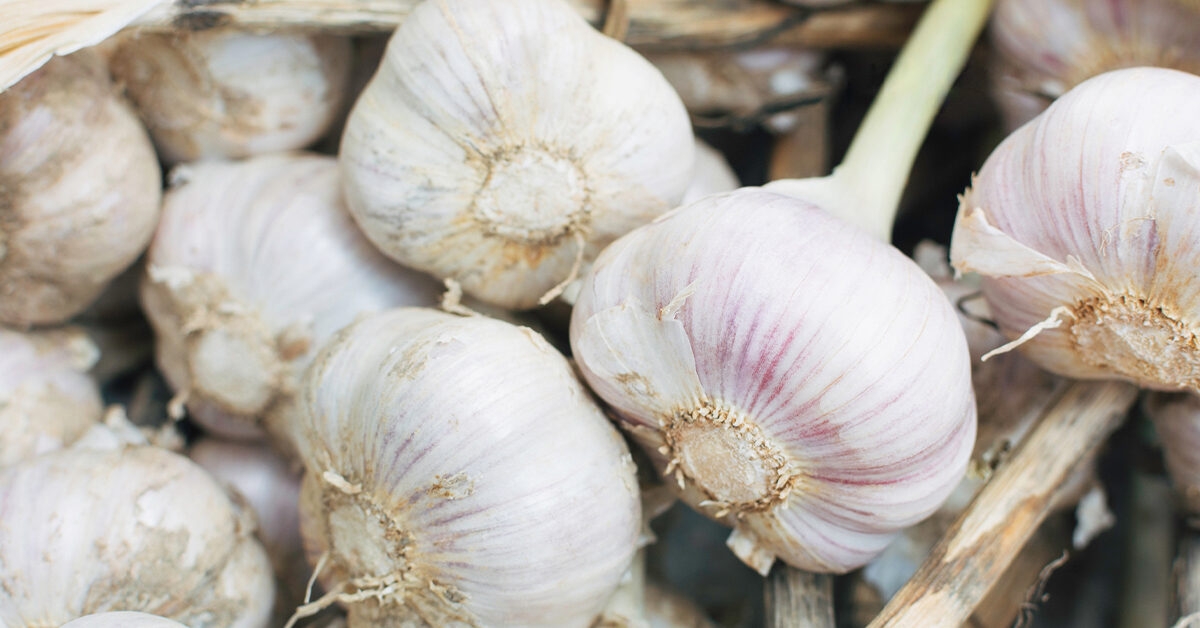 |
| Photo: Healthline |
Whoever thought garlic breath would be good for you? The same sulfur compounds causing that odor may also stop cancer-causing substances from forming in your body, speed DNA repair, and kill cancer cells.
Want more? Garlic battles bacteria, including H. pylori (the one connected to some ulcers and stomach cancer), and research suggests it reduces the risk of developing stomach, colon, esophageal, pancreatic and breast cancers. To get the most benefit, peel and chop the cloves and let them sit 15 to 20 minutes before cooking. That activates enzymes and releases the sulfur-containing compounds that have the most protective effect, says Colleen Doyle, MS, RD, managing director of nutrition and physical activity at the American Cancer Society.
The World Health Organization recommends that adults consume approximately one clove of garlic daily to promote good health.
Garlic is the powerhouse of the allium family, but onions, leeks, chives, and scallions might also protect against stomach cancer, some research suggests.
You can use garlic in several ways to boost your health. If you want to reap the most rewards of garlic, it's helpful to understand the best ways to buy, prepare, and cook the cloves.
The greatest benefit will come from fresh, uncooked garlic. If you prefer to try other forms of garlic, there's garlic essential oil, garlic powder, and garlic extract, but the benefits of these products are not known.
Garlic contains compounds that can benefit your health, including possibly reducing the risk of cancer. The compounds in garlic are more abundant when garlic is eaten raw, or lightly cooked, to prevent these protective compounds from breaking down.
This is just one step that can be taken when following a diet and living a healthy lifestyle with the goal of reducing the risk of cancer.
2. Broccoli
 |
| Photo: Simply Recipes |
New research has linked a compound found in Brussels sprouts, broccoli, and other cruciferous vegetables to one of the body’s most potent tumor-suppressing genes.
The study says that the compound, called I3C, is involved in a complex chemical chain reaction that frees the tumor suppressor to do its job. The research also highlights the chemical warfare that goes on inside the body as it struggles to prevent tumors from developing even as tumors themselves fight to grow and spread.
The research comes out of the lab of Pier Paolo Pandolfi at Beth Israel Deaconess Medical Center’s Cancer Center and Cancer Research Institute. Pandolfi, the Victor J. Aresty Professor of Medicine at Harvard Medical School, headed a team that explored the function of a cancer-suppressing gene called PTEN, which encodes a protein that controls cell growth. Pandolfi called PTEN “one of the most important tumor suppressors in the history of cancer genetics.
“The study’s really exciting,” he said. “I’ve been bombarded by journalists — because of the broccoli connection, let’s be honest. Forget what you think about the science, the fact that [we found] something that your grandma would say [is] good for you, it’s appealing.”
PTEN is regularly targeted by cancers, which seek to delete, mutate, or otherwise inactivate it. Pandolfi and his team, representing institutions in the U.S., Taiwan, China, Italy, Australia, and India, set out to discover how. Using human cells and mice bred to develop cancer, the researchers found that an enzyme known to promote cancer growth, called WWP1, played an important role in interfering with PTEN function.
The researchers analyzed and created a computer model of WWP1’s physical structure, enabling them to search chemical libraries for a molecule that might bind to it and block its function. They discovered that a naturally occurring compound found in cruciferous vegetables — indole-3-carbinol, or I3C — did the trick, neutralizing the enzyme and restoring PTEN’s tumor-suppressing powers in lab mice engineered to develop prostate cancer.
PTEN is also known to affect health more broadly. Mice that produce surplus PTEN develop smaller than normal bodies — likely because of PTEN’s restraint on surplus cell division — but are metabolically healthier than normal mice and live longer.
The PTEN-protecting compound, I3C, was already known to science and thought to have anti-cancer properties, though its precise mechanism was a mystery. It occurs naturally in the cruciferous vegetables that include broccoli, Brussels sprouts, arugula, cabbage, kale, and cauliflower. That group has been investigated in the past for its cancer-fighting properties, according to the National Cancer Institute, with promising results in animal studies, but mixed results in humans.
3. Tomatoes
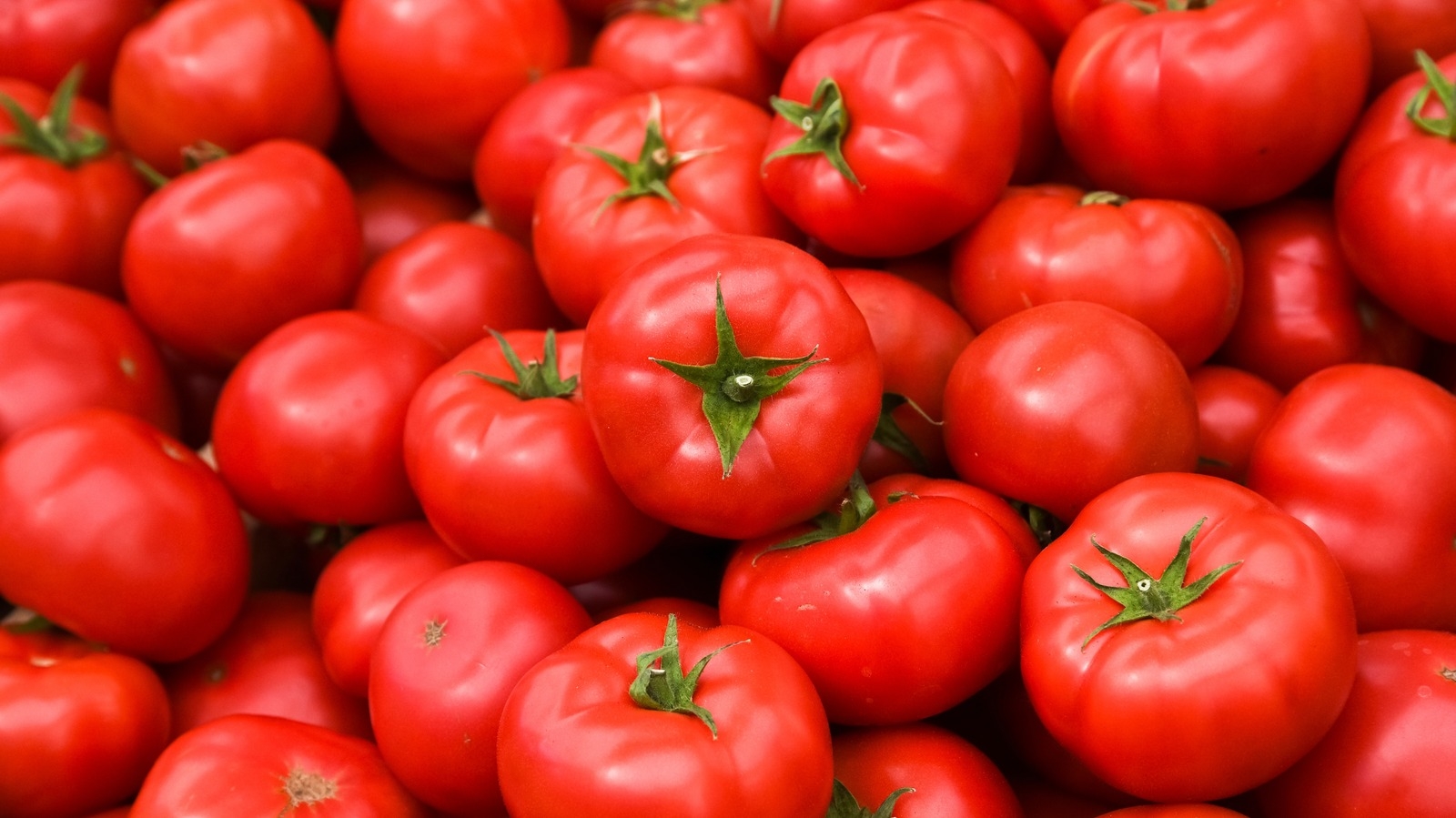 |
| Photo: Shutterstock |
The red coloring in tomatoes makes a juicy, ripe one hard to resist -- and makes them a potential weapon against prostate cancer and heart disease. That red hue comes from a phytochemical called lycopene, a powerful antioxidant, which is most concentrated in tomatoes. Several studies suggest that a lycopene-rich diet is connected to a reduced risk of prostate cancer.
However, researchers aren't yet sure if the sources and types of lycopene act differently on cells and whether other dietary and lifestyle factors play a role in reducing prostate cancer risk.
In laboratory tests, lycopene has stopped other types of cancer cells from growing, including breast, lung, and endometrial (in the lining of the uterus). Researchers speculate that lycopene protects cells from damage that could lead to cancer by boosting the immune system. And they suspect lycopene stops the growth of tumors by interfering with abnormal cell growth, according to the American Institute for Cancer Research.
To get the most benefit from lycopene, eat cooked or processed tomatoes, including tomato juice and pizza sauce. Processing makes the cancer-fighting compounds more available to your body because heat breaks down the plant's cell walls. And including processed tomatoes in dishes with oil such as pizza and pasta with sauce boosts the availability of lycopene. Want more of this compound? Munch on some watermelon, pink grapefruit, or red bell peppers.
Early research connected tomatoes with reducing the risk of prostate cancer but the evidence for this link has weakened as the quality of research has improved. However, the complexities of the types and timing of this cancer’s development, and tomato amounts, forms and possible synergy with other foods, leaves many unanswered questions about potential benefits.
4. Carrots
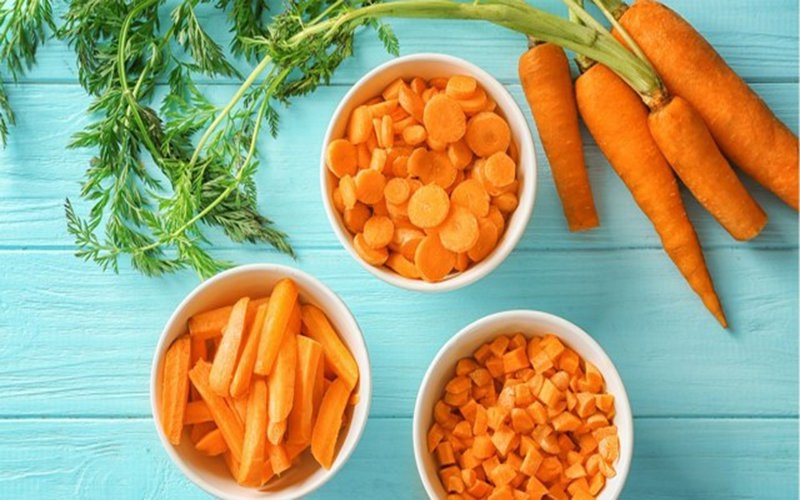 |
| Photo: Getty Images |
Though there is not yet a 100% effective way to prevent all types of cancer, there have been amazing discoveries regarding ways in which certain foods can aid in prevention. Carrots have long been in the public eye as an excellent way to support eye health but are now gaining popularity among researchers as a cancer-fighting vegetable.
Being one of the most popular vegetables amongst all ages, carrots pack a lot of flavor and nutrition. These essential nutrients, including vitamin K and vitamin A, promote overall wellbeing as well as lowering the risk of several cancers. Many studies suggest that carrots and other non-starchy vegetables decrease one’s risk of aero digestive cancers, which include cancers of the mouth, pharynx, larynx, esophageal, lung, stomach, and colon. There are also findings that suggest such vegetables can aid in the prevention of bladder and breast cancer.
In addition to having strong ties to cancer prevention, carrots aid in one’s overall wellbeing. A single carrot, costing only a few cents and containing less than 30 calories, packs about 200% of the daily recommended amount of vitamin A. Eating one carrot per day will also add a significant amount of fiber and vitamin K to one’s diet.
Eating one raw carrot per day is an outrageously achievable goal and the versatile vegetable offers a variety of delicious uses. Carrots can be juiced and consumed as a liquid, boiled/roasted/grilled or fried on their own or accompanying various dishes, or even blended into a soup. This winter, get creative and find ways to add carrots to daily meals. Start the challenge tonight with this immune boosting carrot and ginger soup. In addition to being packed with nutrients, the entire meal can be made with ingredients commonly found in the kitchen. Easy, tasty, budget-friendly, and healthy – does it get much better than that?
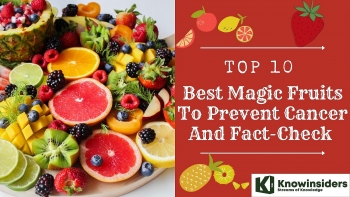 10 Best Magic Fruits To Prevent Cancer And Fact-Check 10 Best Magic Fruits To Prevent Cancer And Fact-Check Fruits are some of the best natural medicines that you can use to help strengthen your immune symptoms, and there are several ones that have ... |
5. Spinach
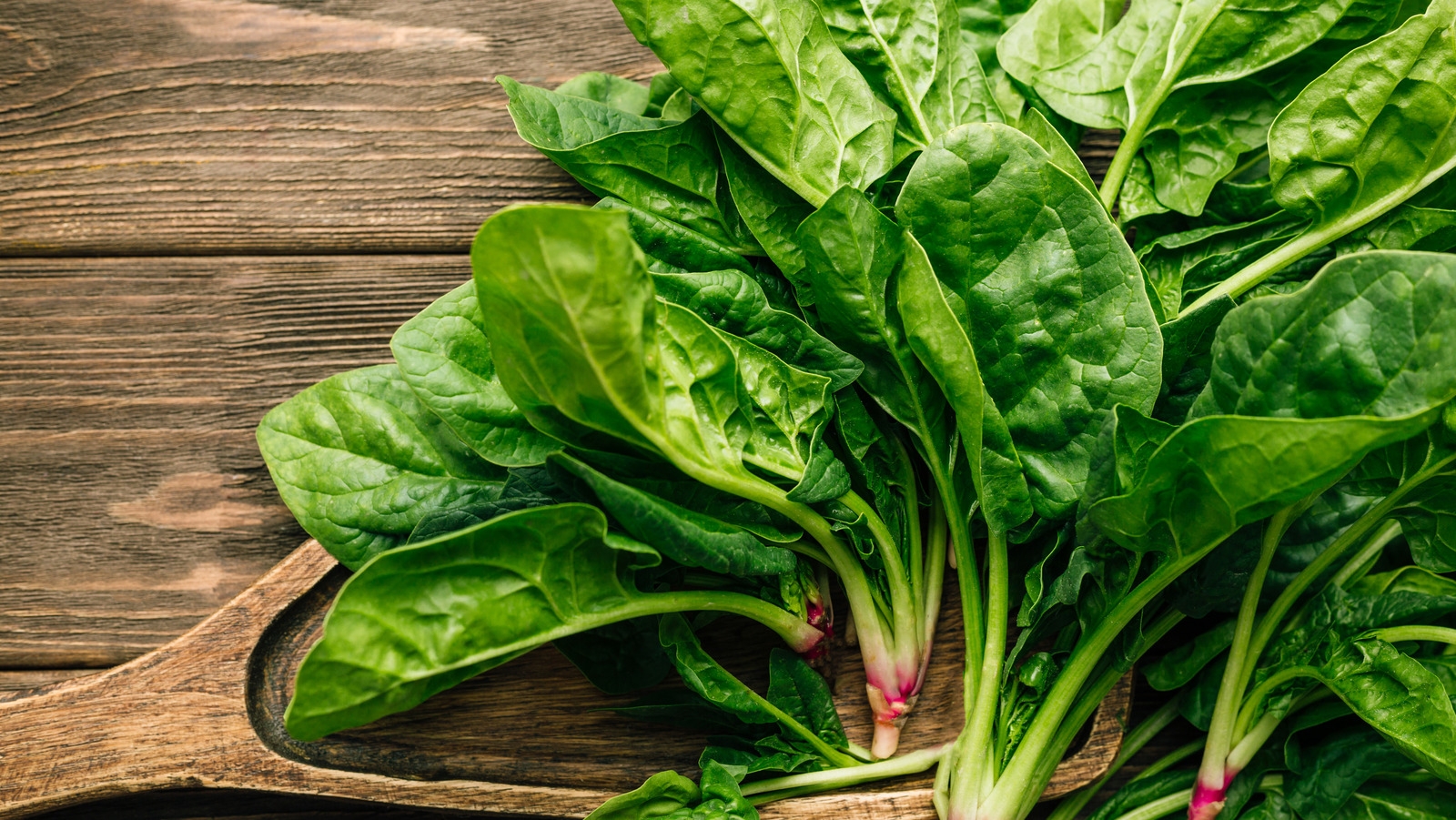 |
| Photo: Mashed |
Maybe you've heard that lutein, an antioxidant, is good for your eyes. Research is by no means confirmed, but it might also play a role in guarding against cancer.
Spinach is rich in lutein and zeaxanthin, carotenoids that remove unstable molecules called free radicals from your body before they damage it. They're found in spinach and other dark green leafy vegetables, and some studies show they could protect against cancer of the mouth, esophagus, and stomach. An NIH/AARP study of more than 490,000 people found that those who ate more spinach were less likely to develop esophageal cancer. Some studies suggest the carotenoids in spinach and other foods reduce the risk of ovarian, endometrial, lung, and colorectal cancer, too.
Throw in folate and fiber, which researchers think might trim the risk of certain cancers, and you've got nutritional powerhouse in every dark green leaf. Folate helps your body produce new cells and repair DNA, and is especially important for women of childbearing age because it can prevent neural tube defects in a developing fetus. You'll get the most lutein from raw or lightly cooked spinach. Enjoy it in a salad, steamed, or sautéed with garlic and olive oil, or stirred into soups. For a change, substitute kale, collard greens, Swiss chard, or romaine lettuce. But spinach is the star.
6. Strawberries
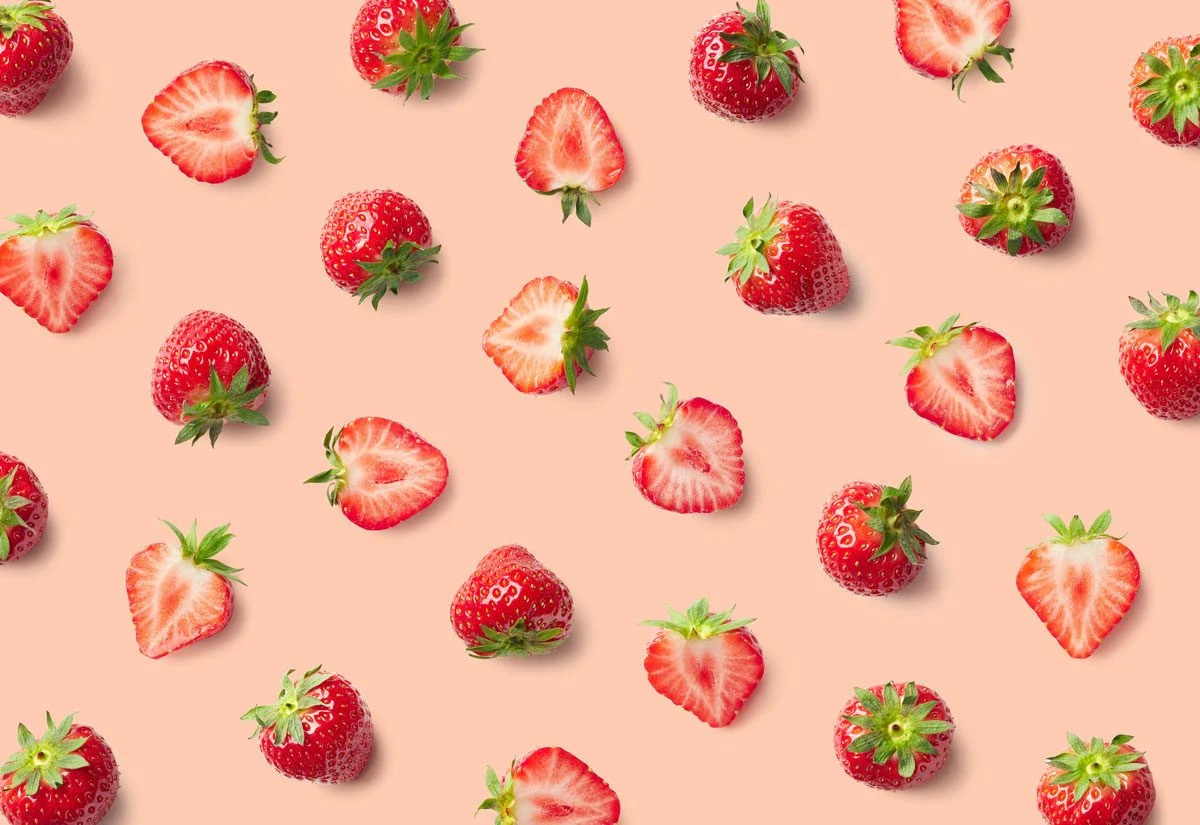 |
| Photo: Best Health Magazine |
Berries scoop up disease-fighting honors like kids in sports collect trophies: They just keep multiplying. Research points to possible protection against heart disease and memory decline as well as cancer. In a recent study, berry extracts slowed the growth of cancer cells; specifically, strawberry and black raspberry extracts had the greatest impact on colon cancer cells.
Strawberries and raspberries are rich in antioxidants such as vitamin C and ellagic acid, a phytochemical. In laboratory tests, ellagic acid seems to have anticancer properties that rev up enzymes, which destroy cancer-causing substances and slows the growth of tumors. It seems to prevent cancers of the skin, bladder, lung, esophagus and breast. They also contain flavonoids, which suppress an enzyme that damages DNA and has been linked to lung cancer. Other types of berries, all rich in flavonoids, deserve a spot on your plate, too: blackberries, blueberries, and cranberries. Blueberries are packed with anthocyanins, which reduce inflammation and are one of the most powerful antioxidants, Fahey says. He considers berries and cruciferous vegetables the most powerful protective foods.
Eating fruits (including berries) and vegetables probably decreases the risk of lung cancer and could prevent cancers of the mouth, throat, larynx, esophagus, stomach, pancreas, and prostate, according to a review of hundreds of clinical studies conducted for the World Cancer Research Fund and the American Institute for Cancer Research.
7. Cinnamon
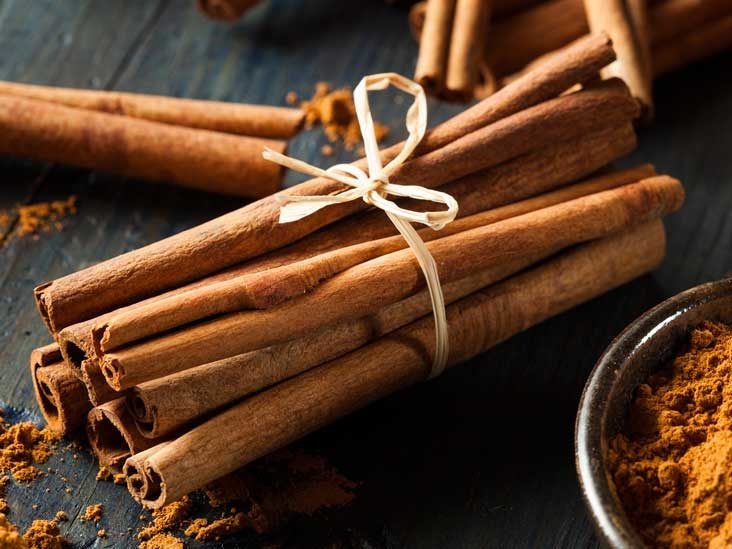 |
| Photo: BBC Good Food |
Cinnamon is well-known for its health benefits, including its ability to reduce blood sugar and ease inflammation.
Researchers based at the Kashan University of Medical Sciences in Iran, reviewed the current literature on cinnamon’s myriad anti-cancer effects. They highlight data from dozens of studies, demonstrating that cinnamon acts primarily by targeting numerous apoptosis-related pathways in cancer cells.
Impaired apoptosis is a hallmark of cancer: the cells do not die when they should, and they’re characterized by abnormal viability. Therefore, “One of the most important properties of any potential anticarcinogenic compound is its ability to interfere with cancer cell viability,” the Kashan University group writes.
Cinnamomum––what we commonly call cinnamon––is not a single plant, but rather a genus of small, aromatic evergreen trees and shrubs unique to different parts of the world. The ground spice we use in cooking and baking comes from dried strips of the inner bark of various Cinnamomum tree species. Two of the main culinary varieties are Ceylon cinnamon (Cinnamon zeylanicum), native to Sri Lanka, and cassia cinnamon (Cinnamomum aromaticum), which originated in Southern China. Extracts, teas, and essential oils derived from the tree’s bark and leaves have been used both in food and medicinally for centuries.
There is evidence that cinnamon extract (CE) has anti-proliferative effects against various types of cancer cells. The Kashan researchers cite a study that used a CE treatment on three hematological cancer cell lines (U937, Wurzburg and Jurkat cells). Each cell type exhibited a dose-dependent decrease in viability when treated with dosages ranging between 0.05 and 0.2 mg/ml of CE.
Another study found that cinnamon inhibited cell growth in the cervical cancer cell line, SiHa, when treated with various concentrations of CE (10, 20, 40 and 80 mg/ml).
Cinnamon also appears to strengthen the body’s immune system. A team in South Korea treated melanoma cell lines in vitro with CE and observed that it “strongly inhibited tumor cell proliferation.” They showed that cinnamon induced active cell death in tumor cells by up-regulating pro-apoptotic molecules (Bad, Bim, Bax and Bak). Furthermore, CE blocked melanoma growth by inhibiting NFκB and AP1, which play critical roles in the survival of tumor cells (Kwon, H. et al. BMC Cancer. 2010; 10: 392).
The South Korean researchers also used cinnamon to treat rodents injected with mouse melanoma. They observed reductions in tumor size and a significantly increased survival rate among mice treated with CE, as compared with a control group that didn’t receive the cinnamon treatment.
8. Whole Grains
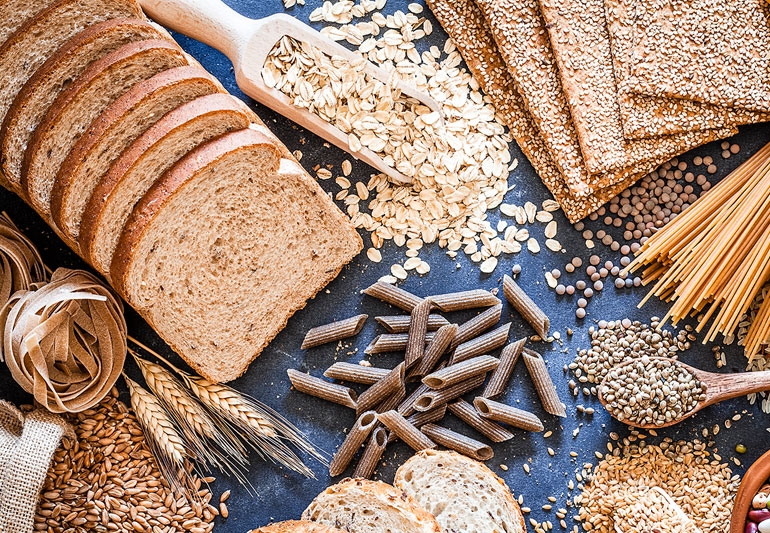 |
| Photo: Shutterstock |
The next time you step up to the deli counter, remember this: Bland white bread can't compete with hearty whole wheat in taste or nutrition. Maybe you've heard about revised federal nutrition guidelines that recommend half of all the grains you eat -- rice, cereal, and even chips -- should be whole. That's why even sugary kids' cereals and frozen pizzas are loading up on whole-grain ingredients.
Whole grains deliver plenty of fiber, but while diets high in vegetables and fruits have been linked with a decreased risk of colorectal cancer, it isn't yet clear how dietary components, such as fiber and certain types of fats, affect colorectal cancer risk. Still, whole grains contain other substances that might battle cancer, including lignans, which act as antioxidants, and saponins, which could keep cancer cells from multiplying. Look for bread labeled "100% whole wheat" rather than simply "wheat bread," which likely contains refined grains. For even more lignans, choose a whole wheat bread sprinkled with flax or sesame seeds.
9. Nuts
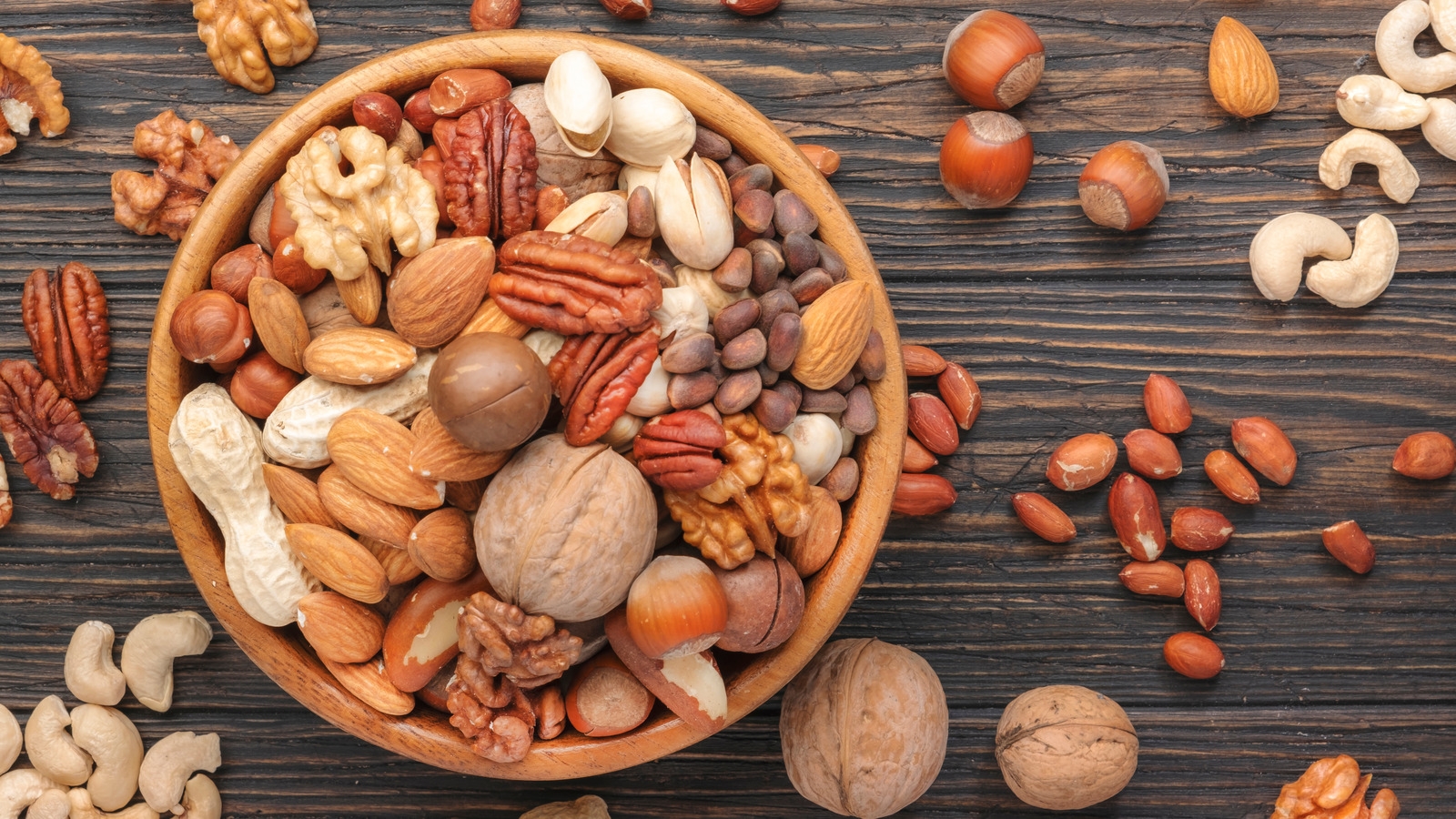 |
| Photo: Shutterstock |
People who eat nuts in their adolescence may have a better chance of fighting off breast cancer later in life, according to data from the Harvard Nurse’s Study. A follow-up study involving the daughters of the nurses corroborated the findings. Those eating more peanut butter, nuts, beans, lentils, soybeans, or corn were found to have just a fraction of the risk for fibrocystic breast disease, which places one at higher risk of cancer. The protective effects were found to be strongest for those most at risk, such as those with a family history of breast cancer.
Another study out of the British Journal of Cancer found that even two handfuls of nuts a week may protect against pancreatic cancer, one of our most fatal malignancies.
Nuts are described as “nutritionally precious,” which may explain some of the mechanisms by which nut components induce cancer cell death and inhibit cancer growth and spread in vitro. But which nuts work the best? In my video #1 Anticancer Vegetable, we learned that two classes of vegetables—the broccoli family vegetables and the garlic family vegetables—most effectively suppressed breast cancer cell growth. In Which Fruit Fights Cancer Better?, cranberries and lemons took the title.
What about nuts? In terms of antioxidant content, walnuts and pecans steal the show. Twenty-five walnuts have the antioxidant equivalent of eight grams of vitamin C (the vitamin C found in a hundred oranges).
But how do they do against cancer? In the video, Which Nut Fights Cancer Better?, you can see a graph of human cancer cell proliferation versus increasing concentrations of the ten most common nuts eaten in the United States. If you drip water on these cancer cells as a control, nothing happens. Hazelnuts, pistachios and Brazil nuts don’t do much better. Pine nuts, cashews and macadamias start pulling away from the pack. Almonds appear twice as protective, halving cancer cell growth at only half the dose as pine nuts, cashews, and macadamias. Walnuts, pecans, and peanuts come out as the clear winners, causing a dramatic drop in cancer proliferation at just tiny doses.
10. Olive Oil
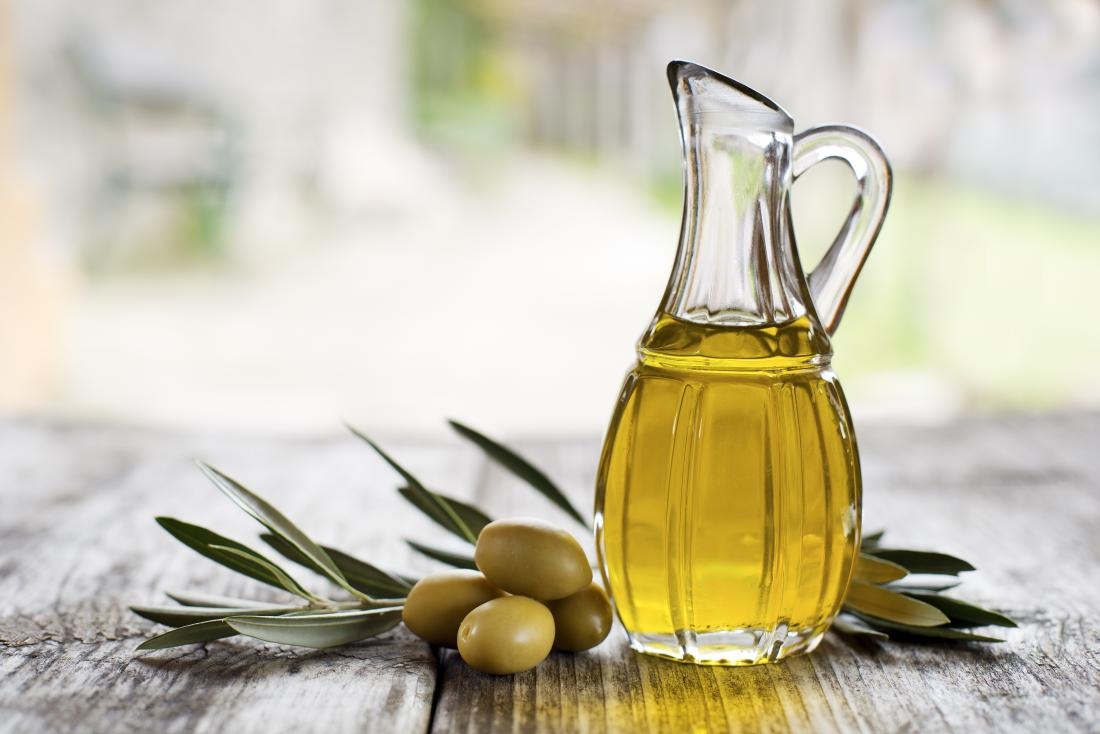 |
| Photo: Getty Images |
A research team led by Hunter College has shown that certain extra-virgin olive oils kill human cancer cells with no obvious effect on normal cells, according to a new study published in PLOS ONE. Previous studies demonstrated that a component found in some olive oils—oleocanthal—has this cancer-killing power. The new study demonstrates that olive oils rich in oleocanthal are powerful enough to kill cancer cells, while oleocanthal-poor olive oils are not.
Recognizing that different olive oils have different oleocanthal concentrations due to their origin, harvest time, and processing methods, the researchers tested a variety of olive oils to determine their respective concentrations of oleocanthal, which ranged from very low to very high. The olive oils that had high oleocanthal content completely killed in vitro cancer cells in a manner similar to purified oleocanthal. The olive oils with average oleocanthal content reduced viability, but to a lesser extent. Those with no oleocanthal had no effect on cell viability.
In addition to these in vitro findings documented in the article titled “Oleocanthal and Oleocanthal-rich Olive Oils Induce Lysosomal Membrane Permeabilization in Cancer Cells,” the researchers found that injection of oleocanthal into mice engineered to develop pancreatic neuroendocrine tumors reduced their tumor burden and extended their lifespan. The oleocanthal injections extended the lives of the mice by an average four weeks. Based on a lifespan conversion, oleocanthal—if it has the same effect in humans, which is not yet known—might extend human life by 10.4 years.
The new study builds on previous research conducted by David Foster, PhD, Rosalyn Yalow Professor in the Department of Biological Sciences at Hunter College, including the co-authored 2015 article “Oleocanthal Rapidly and Selectively Induces Cancer Cell Death via Lysosomal Membrane Permeabilization,” published in the journal Molecular and Cellular Oncology.
“Whether oleocanthal can be used as a magic bullet to target cancer cells is not clear,” said Professor Foster, an author of the new study. “However, the data provided in this article validate studies indicating that extra virgin olive oils can prevent cancer.”
“Today, there are no brands of olive oil sold at grocery stores in the United States that mention ‘oleocanthal’ or other polyphenols on their label, and this might change as producers of olive oil catch up with the scientific research, and consumers become more savvy,” said Limor Goren, PhD, Research Associate at Hunter College and lead author of the new article. “Before then, health-conscious consumers can find oleocanthal-rich oil in specialty olive oil stores or online by searching for terms like ‘oleocanthal’ or ‘polyphenol rich olive oil.’”
She adds that consumers can also do their own taste test for oleocanthal: “Taste a small amount of an extra virgin olive oil; if there is a signature stinging sensation felt at the back of the throat, that is an indication of oleocanthal. It should feel peppery.”
The current study, which was conducted by scientists from Weill Cornell Medicine, Rutgers University, and Albert Einstein College of Medicine, in addition to Hunter College, supports earlier findings of how oleocanthal kills cancer cells. Oleocanthal induces damage to cancer cells’ lysosomes, cell components that contain enzymes used to break down larger molecules like proteins. The oleocanthal degrades the integrity of the lysosomal membrane, releasing the enzymes into the cells’ cytoplasm, which leads to cell death. Cancer cells often have larger and more numerous lysosomes, making them more vulnerable to oleocanthal than other cells.
How does cancer treatment affect your diet?
Treatments such as chemotherapy and some forms of radiation therapy can cause a variety of side effects, including:
→ Constipation, which can cause discomfort and further reduce your desire to eat
→ Diarrhea, which can drain your body of nutrients
→ Fatigue, which means you’re less active, so you burn fewer calories and don’t feel as hungry throughout the day
→ Loss of taste, which can make food unappealing
→ Nausea and vomiting, which might reduce your appetite and cause weight loss
Some people also have hormone therapy after chemotherapy for breast cancer or endometrial cancer. The drugs suppress production of estrogen, a hormone that plays an important role in metabolism. If your metabolism slows down, you may put on weight.
People with pancreatic cancer often find it difficult to maintain their weight. Since the pancreas isn’t functioning the way it should, they may not be able to digest food normally. This can lead to weight loss or malnourishment.
Why is your diet important during cancer treatment?
Since cancer treatment can lead to fluctuations in appetite and body weight, it’s important to pay close attention to your diet. In addition to helping you maintain a healthy weight, eating a balanced diet during chemotherapy or radiation therapy can:
→ Help manage treatment side effects
→ Increase energy
→ Increase muscle tone
→ Preserve immune function
→ Reduce inflammation
What foods should you add to your diet and what to avoid eating during cancer treatment?
1. Foods you should add
Plant-based Proteins
Some of the best foods to eat during chemotherapy or other cancer treatments are plant-based proteins. They offer the highest levels of vitamins and minerals, Rajagopal says. This means eating lots of vegetables as well as beans, legumes, nuts and seeds. If you do eat animal proteins, choose lean options like chicken or fish.
Healthy Fats
Monounsaturated and polyunsaturated fats also have health benefits. Avocados, olive oil, grapeseed oil and walnuts are all high in omega-3 fatty acids, which help combat inflammation and improve cardiovascular health.
Healthy Carbs
When choosing carbohydrates, opt for foods that are minimally processed, like whole wheat, bran and oats. These have soluble fiber, which helps maintain good gut bacteria. Soluble fiber also promotes the production of short-chain fatty acids (SCFAs), which lend a hand to everything from metabolism to cellular repair.
Vitamins and Minerals
“Vitamins and minerals help our bodies’ enzymatic processes, which play a big role in boosting immune function and reducing inflammation,” Rajagopal says. When possible, select foods fortified with vitamin D. These may include milk, orange juice, yogurt and some cereals.
2. What foods to avoid
Be aware of what’s going into your body during cancer treatment. Read nutrition labels and prepare as much of your own food as you can. It’s best to stay away from highly refined, processed food. You should also avoid fried foods that contain a lot of hydrogenated oils, which can increase inflammation.
Since people with cancer often have compromised immune systems, consider skipping foods that carry the risk of foodborne illnesses, including:
→ Lightly cooked or raw fish, such as sushi
→ Soft-cooked eggs or foods that contain raw eggs, such as homemade mayonnaise
→ Unpasteurized cheeses and dairy products
→ Unwashed fruits or vegetables
 Double Mask Fact Check: When to wear and not to wear Double Mask Fact Check: When to wear and not to wear Is double mask really a good choice of protecting yourself for everyone during Covid-19? There're times when you need it and don't need it. Check ... |
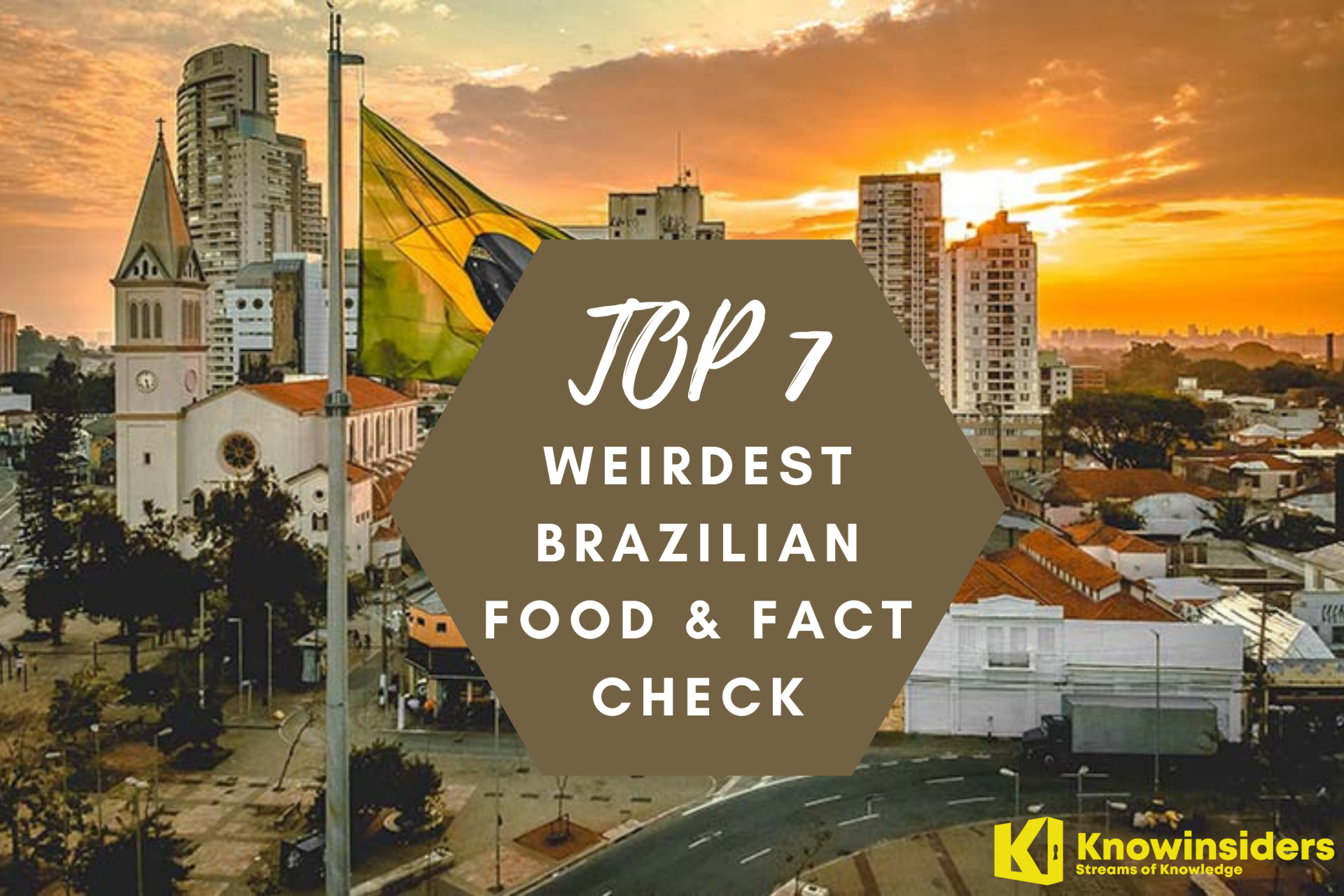 Top 7 Weirdest Brazilian Food & Fact Check Top 7 Weirdest Brazilian Food & Fact Check Tasty or not, the dishes described below are still Top 7 Weirdest Brazilian Foods. Check the article for more information about them & Fact ... |
 Fact-Check: Not to Pay 'Student Loans' for 2 Years, Get Forgiveness After 10 Years Fact-Check: Not to Pay 'Student Loans' for 2 Years, Get Forgiveness After 10 Years Fact-Check: Millions of federal student loan borrowers in USA have not had to pay their student loans for over two years. |
 Fact Check: Drinking Beer to Cool Down in Summer Fact Check: Drinking Beer to Cool Down in Summer Drinking summer beer for refreshment is a habit of most people, especially men. Imagine how much "refreshing" you can drink after work after work. However, ... |


























